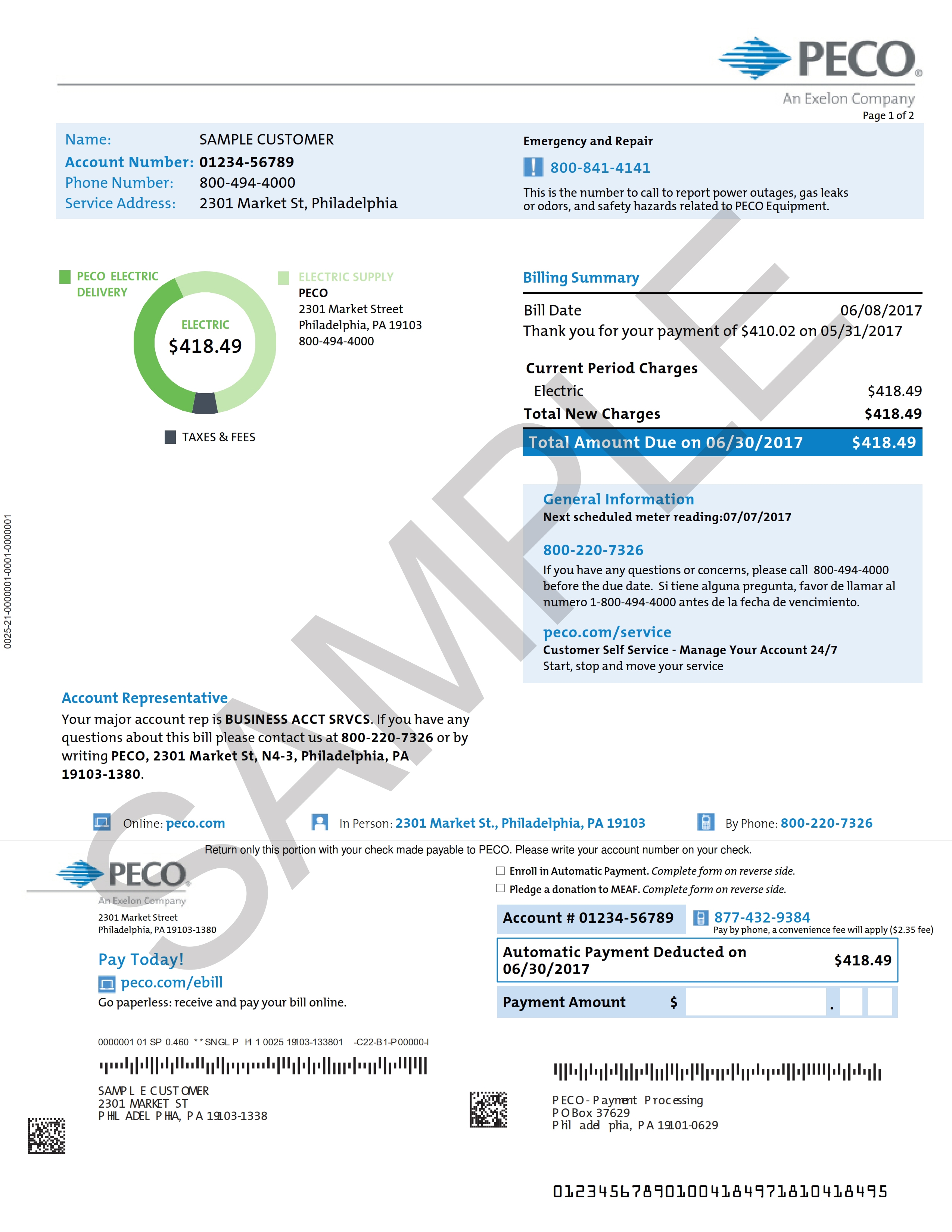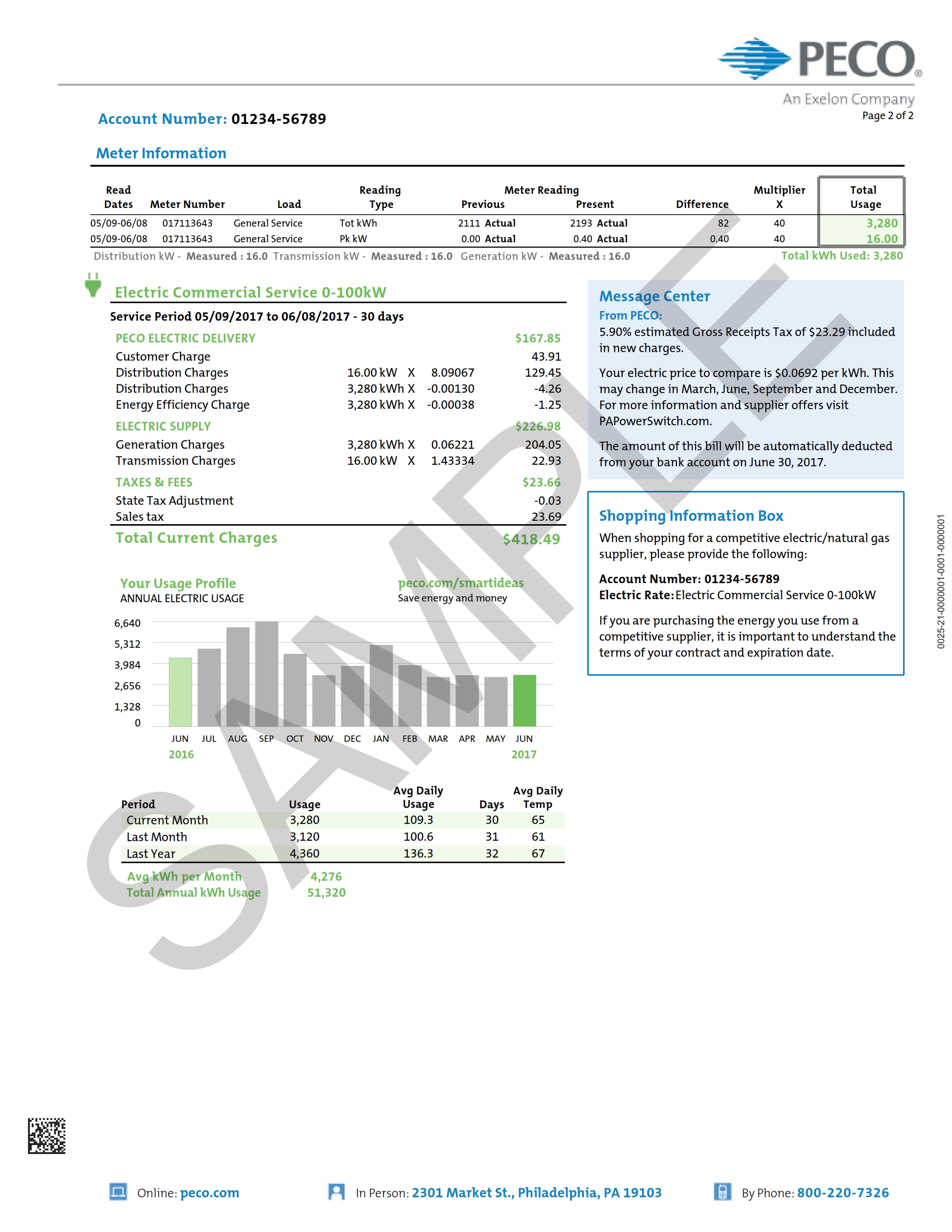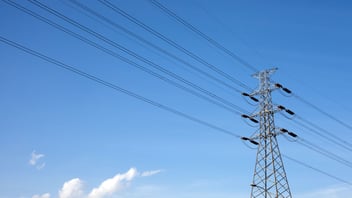How to Read Your Utility Bill: PECO Energy (PA)

If you’re a commercial or industrial customer in our Pennsylvania service area, you’re likely getting your utility bill from several companies. In this article, we’ll look at the utility bill details for PECO Energy. We’ll review what you’re paying for, break down your supply and delivery charges, and highlight where you can save. For reference, we’ve spelled out some of the typical language on your bill, like how to read kilowatt-hours (kWh).
Your PECO Energy bill includes:
- A 10-digit account number (note: 10-digit account number changing to Electric Choice ID PE for Electric & PG for Gas in Jan)
- Bill summary
- Supply and delivery charges, electricity usage chart
- Meter reading usage information
Your monthly charges will appear on the first page for electric and gas. The circle graphs on this page display a breakdown of your charges, including PECO electric delivery, electric supply, PECO gas delivery, and/or gas supply.

Supply Charges
Your energy charges are divided into delivery and supply charges. Your supply charges, displayed on page 2, are the actual cost of the electricity and natural gas you use. As a PECO Energy customer, you can choose your supplier. If you get your electric supply from another company, that information will be displayed in the circle graph.
Delivery Charges
Your delivery charges are the total cost of infrastructure involved in getting the electricity or natural gas to your business, i.e., poles, wires, gas lines, meters, equipment, trucks, and even employees. You’ll find a breakdown of your electricity and natural gas charges on page 2, including a graph of your monthly energy use. Additional charges on this page include:
- Energy efficiency charge – supports energy efficiency programs in your area.
- Transmission charge – basic service charges for the cost of transporting electricity over high-voltage wires from the generator to the distribution system.
In addition to your delivery charges, your meter information will also be on page 2. Meter details include the total cost of your electricity, marked as kWh, while the total cost for your natural gas is expressed as centum cubic feet (Ccf).

Although your delivery charges are predetermined and static, there’s room for improvement in your supply charges depending on additional resources and how much electricity and natural gas your business consumes daily.
| Key Takeaways |
| Energy markets can be unpredictable. Catalyst Power offers retail electricity plans that help your business take control of your costs and hedge against market volatility. |



